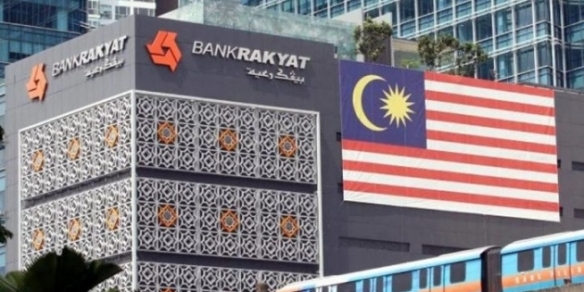Syed Mokhtar company wins digital terrestrial TV tender
By Digital News Asia January 8, 2014
- To be fully self-funded, contract over 15-year period once live
- 700 MHz band will be for high speed mobile broadband services
 IN yet another major win for politically-linked tycoon Syed Mokhtar al-Bukhary, he will now own and control the infrastructure by which Malaysians will be watching their favourite digital TV programmes.
IN yet another major win for politically-linked tycoon Syed Mokhtar al-Bukhary, he will now own and control the infrastructure by which Malaysians will be watching their favourite digital TV programmes.
Without giving a date for when the service will be fully rolled out, the Malaysian Communications and Multimedia Commission (MCMC) has named Puncak Semangat Sdn Bhd as the successful bidder to build, operate and manage the infrastructure for Digital Terrestrial Television Broadcast (DTTB) service in Malaysia.
The MCMC had in 2012 also allocated Puncak Semangat a sizable block of the 2.6GHz spectrum for Long Term Evolution (LTE) wireless network rollout in the country, despite the company having had no telco background then.
As for the DTTB tender, three companies were shortlisted in November 2012 for the final round of evaluation – i-Media Broadcasting Solutions Sdn Bhd, Puncak Semangat and Redtone Network Sdn Bhd.
In the evaluation, the proposal submitted by Puncak Semangat edged over the others in terms of its overall strategies which was based on a comprehensive and detailed plan and revealed to be a sustainable business model, the MCMC said in a statement.
Puncak Semangat shall be obligated to develop the DTTB infrastructure which includes a digital multimedia hub and a network of high, medium and low powered digital TV transmitters, the industry regulator said.
As per requirement under the tender specifications, the project shall be fully funded by Puncak Semangat through its own investments.
According to the MCMC, the detailed proposals from i-Media Broadcasting, Puncak Semangat and Redtone Network were thoroughly evaluated to carefully select a single party to function as a Common Integrated Infrastructure Provider (CIIP) for Free-to-Air (FTA) broadcasters in the country.
The evaluation was done by experts from various professional backgrounds in the MCMC from June to October 2013. Additionally, the MCMC said it conducted a market assessment and internal benchmarking to further validate the proposals by the three shortlisted bidders.
Evaluation was based on the criteria as set out in the tender document (Applicant Information Package No.1 of 2012) and additional criteria issued on April 23.
They included: Frequency usage of 470 MHz-694 MHz before and after analogue switch-off, transmission plan, set-top box and analogue switch-off strategies, bit rate usage to ensure quality of service, implementation timeline, awareness programmes, conditional agreements with FTA broadcasters, access rate charges, detailed financial projections over a 15-year period, and funding capacity.
The DTTB infrastructure will enable FTA broadcasters to migrate to a fully digital platform and air more television and radio channels as well as provide additional services such as electronic programme guides (EPGs), service information tables, programme associated data, subscriber management systems and multi-lingual audio.
Subsequent to the trial on DVB-T1 (Digital Video Broadcasting on Terrestrial – first generation) conducted in 2005 by RTM, Malaysia adopted the second-generation standard called DVB-T2 (Digital Video Broadcasting on Terrestrial – second generation) in 2011, thus leapfrogging to the latest standard in comparison with most other countries around the world, which adopted DVB-T as their transmission standard, the MCMC said.
This technology standard enables wider coverage and the airing of more high definition (HD) channels.
Analogue broadcasting will be switched off once the full digital platform has been rolled out, the Commission added. This in turn will allow for more high-speed mobile broadband services in the 700 MHz band.
FTA broadcasting currently covers 98% of populated areas in Malaysia and is enjoyed by 47% of households, while the rest of the population watches TV via satellite and Internet platforms, the MCMC said.
In order to watch FTA digital terrestrial broadcasting, viewers need to purchase a set-top box or alternatively, purchase an integrated digital television (IDTV) that comes complete with a built-in set-top box.
The first roll-out of DTTB services is expected to be in the third quarter (Q3) of 2014, for a start in a few test areas, while full nationwide coverage to an estimated 98% populated areas is slated by the end of the analogue-digital simulcast period.
Related stories:
Final evaluation for the three shortlisted for digital terrestrial TV
It’s spectrum rebalancing: MCMC on 2.6Ghz allocation
Week in Review: What’s driving Syed Mokhtar’s telco interest?
For more technology news and the latest updates, follow @dnewsasia on Twitter or Like us on Facebook.


